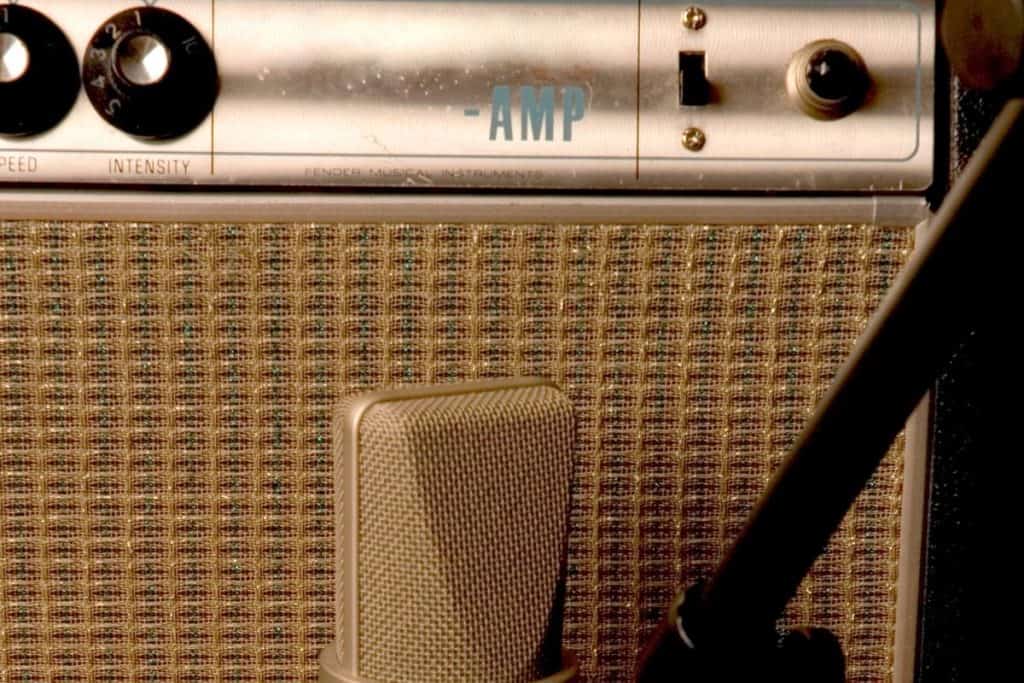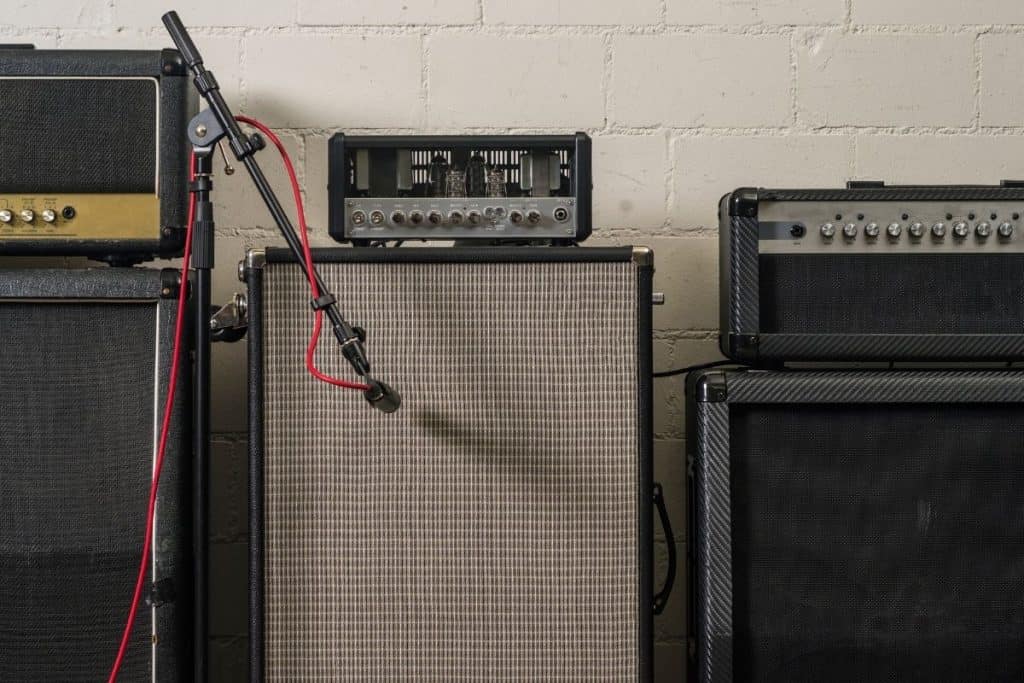So, you’ve picked the perfect tone which is all dialed into your amp and you’ve got those creative juices flowing. You’re all set!
You just need to mic up your guitar and you can start to showcase your talents.

Now, this can seem like quite a daunting task, especially when so many small factors can change your sound quality.
If you play regularly or on-demand, you are probably used to last-minute gigs.
It’s in precisely these types of situations that you need to show expert knowledge of how to set up quickly and efficiently to prove your professionalism.
So you’re really going to need to be hyperaware of how the placement of your mic can affect sound quality.
In this article, I will go over all the tips and tricks of how to mic up your guitar amp in the most effective way.
Choosing The Microphone
Just in the same way that you took the time and thought to choose your beloved guitar or amp, you also need to be mindful of the microphone that you choose too.
When it comes to which microphone you should choose for which purpose, honestly I could talk for days and days.
Instead of doing that, I’m going to give you my most basic rule. If your miking a guitar amp literally any dynamic microphone will work well.
Shure’s SM57 is a really popular choice if you haven’t purchased one already. While it is a little expensive, it is unmatched in sound quality. I can’t recommend it enough.
Amp Location
Although you might not think it, amp placement will have a massive impact on your overall tone. If you’re going to use a combo amp you might want to make sure that it doesn’t stay on the floor.
This is because the microphone is likely to pick up unwanted sound from the vibrations coming from the amp.
Now, this isn’t to say that you need to go start spending hundreds of dollars on a fancy stand. As long as it can withstand the weight of the amp, any table you have will do fine.
If you have a much larger amp such as a half stack, raising the amp isn’t necessary, however, I would still advise micing one of the top drivers when you come to record.
Moving The Microphone
Even just an inch of space can change the sound of your guitar.
So with such small margins for error, how do you decide where the microphone should go without spending half the night moving the mic an inch this way and then that?
If you want to have ample bass in the set that you’re playing, scootch the mic towards the amp speaker as this increases the bass frequency.

If you’ve got an omnidirectional microphone, this tip won’t work for you.
This shouldn’t be a massive issue though, as they don’t tend to be the microphone of choice for close-miking a guitar amp.
If you want to try and get rid of those midrange and upper-mid frequencies, place the mic to the side, close to the edge of your speaker.
Alternatively, placing the mic in the center of the speaker will accentuate those frequencies.
Moving the mic to a 45-degree angle can subdue harsher higher frequencies, but how well this will work depends entirely on the microphone that you are using.
As a rule of thumb, it is best to direct your mic toward the speaker until you find the correct distancing and position.
Find The Correct Spot To Mic
So, here we’re assuming that the tone is already correct, and your only objective is to position the mic in the best way possible. Honestly, the best tool that you have for this is your ears.
While positioning your mic is important, it is nowhere near as vital as listening to the sound being produced.
You want to be listening out for what the mic is getting and then deciding what needs to be changed. Then you can move your mic accordingly, as discussed above.
But if you can’t distinguish what sound is being produced, there will be no way to know which way you need to move it.
For example, if you want bass and place the microphone close to the speaker, you need to be able to listen out to see if it becomes too booming then.
If it does, you can edge it back a bit. Can you hear the highs and lows amazingly but there’s no real oomph in the midrange, well then move the mic closer to the center and away from the edge?
Also please keep in mind that even the tiniest of movements can have massive effects when you are miking up your guitar, so small adjustments only. We’re talking a matter of mere inches here.
Move the microphone feet away and your sound is going to be completely different from how it sounded before.
Final Thoughts
While micing up a guitar amp can seem scary at first, it’s not all that hard as it seems. It is definitely one of those things where the saying practice makes perfect comes into play.
If you are worried about ensuring the best sound, the best advice I could really give you is to play around with your guitar, mic, and amp a little bit.
Try positioning it in different places, different rooms, and different settings, and listen out for the several tips and tricks we discussed throughout this article.
If it sounds wrong, move the mic around slightly until it sounds a little bit better.
You’d be surprised how quickly you’ll find yourself becoming attuned to the sounds and soon enough it’ll be as easy as breathing.
Give it time, be patient, and most importantly have fun. It’s a hobby, a passion, and a joy for a reason.
Just as you perceived to learn the talent of playing, I am sure you will soon have the expertise of micing up in perfect precision.
